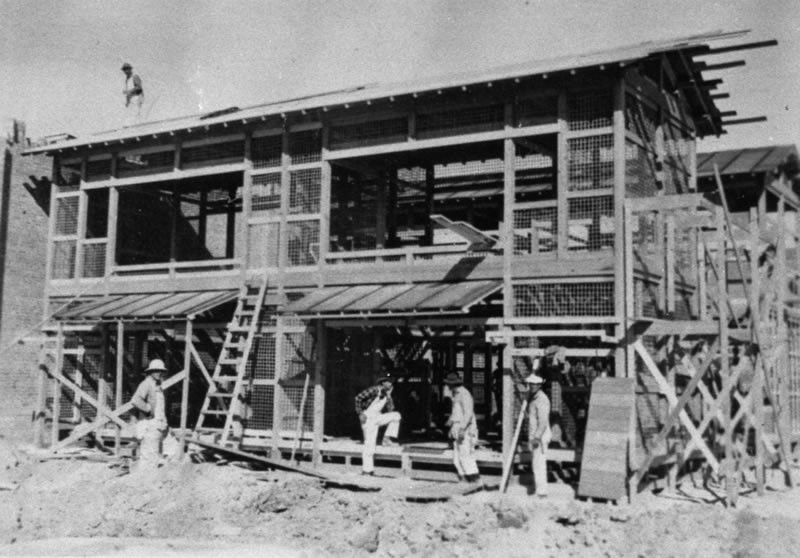The surviving buildings from the German-Japanese village at Dugway Proving Grounds.
Napalm was first tested on a football field near the Harvard Business School.
Later tests were carried out at Jefferson Proving Ground on derelict farm buildings.

But more extensive testing was needed so that determine the effectiveness of the weapon against German and Japanese cities.
Aerial view of the German-Japanese village at Dugway Proving Grounds.
The German buildings were designed by Jewish architects Eric Mendelson and Konrad Wachsmann.

Two German houses at the German-Japanese village at Dugway Proving Grounds.
To simulate Germany’s humid climate, steam radiators sprayed the wood throughout the night.
The rooms were also outfitted with the appropriate furniture typical of an average working class family.

The amount and distribution of the furniture was made as similar as possible to real German households.
Much of this work was done by a set of designers from RKO studios in Hollywood.
Workers build a Japanese house at Dugway Proving Grounds.

Photo:JapanAirRaids.org
Reproducing the Japanese structures proved to be more difficult.
Mountain Douglas Fir trees were used to simulate another Japanese wood known as Hinoki.
Rattan was used as a substitute for bamboo which was typical in Japanese construction.

For Tatami mats, replicas made out of agave fibers were used.
They documented everything from how intensely the fire burned, how long it took, and so on.
The army built mockhousesand not factories, making very clear what these weapons were meant to accomplish.

As many as 67 Japanese cities were subjected to incendiary attacks during the course of the war.
Some 40,000 tons of M69s were used in these attacks.
Today, very little of the original German-Japanese village remain on site.

Tokyo burns under firebomb assault, 26 May 1945.
Photo: US Army Air Forces
The German-Japanese village today.
Photo: KSL-TV
Observation bunker.


